Beth Kephart's Blog, page 32
December 1, 2015
Thunder and Lightning/Lauren Redniss: reflections
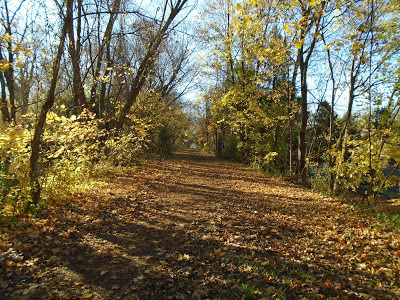 Not long ago, my husband and I escaped to Frenchtown, NJ. I taught memoir on a Sunday, then spoke, the next day, to an assembly of high school students. My husband walked the banks of the Delaware and found, he said, great peace. Quietude. The occasional passerby. Fish that seemed to come when called.
Not long ago, my husband and I escaped to Frenchtown, NJ. I taught memoir on a Sunday, then spoke, the next day, to an assembly of high school students. My husband walked the banks of the Delaware and found, he said, great peace. Quietude. The occasional passerby. Fish that seemed to come when called.Peace. I search for it, too. Shield myself from incipient interruptions, step away from active unkindness, shrink from noise, read deep into the news with a hope for understanding.
And, always, books. Over the last few days, during a storm of work, I've reached repeatedly for Lauren Redniss's glorious Thunder and Lightning: Weather Past, Present, Future—an illustrated (Adam Gopnik rightly calls it illuminated) collage of odd facts, hard science, and Redniss's signature way of seeing.
This is a book so unto itself that it comes to its readers utterly undefended. No introduction. A simmering table of contents. Facts lassoed from a multitude of unexpected sources. We meet the managers of a cemetery who are left with the sweep of dislocated bones, post storm. The secret keepers of the Farmers Almanac. A company called Planalytics, which is apparently right down the road from me and is designed to help companies plan for weather incursions, the spiking needs wrought by heat and hurricane. Weaponized weather experts. The inventors of cloudbusters. The mad-scientist brain of Nathan Myhrvold (now at work on, among other things, solar radiation management), the long-distance swimmer Diana Nyad (who is popping up in many things I've read lately), and the seeds that burst to life every eight years ago in the desert.
What binds it all is erudition, curiosity, and appetite for the alluringly strange. What makes it so peaceful to hold, to sit with, to ponder is how much it teaches through story, ink saturation, and hieroglyphics.
We see so many books that are "just like" books—books that are, indeed, marketed that way. Peace, though, is the original mind set free. I'll wake at 4 AM for this. I'll read it by a lamp in the lonesome dark.




Published on December 01, 2015 16:30
November 30, 2015
TAYSHAS and Cleaver: a kind One Thing Stolen combination
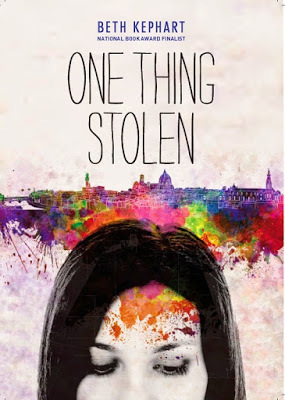 I don't take one darned thing for granted.
I don't take one darned thing for granted.Every book is hard, and every bit of luck really is sheer luck, and goodness comes at you from unforeseen places, or a friend steps in, or something.
So I'm saying thank you today to the unforseen:
To Cleaver Magazine and Melissa Sarno, for naming One Thing Stolen to its Best of 2015: YA Staff Picks. To the Texas Library Association for slipping the book onto its 2016 TAYSHAS Reading List (among so many other powerful novels and nonfiction selections).
One Thing Stolen really was a book I hoped into being—hoped and fervently re-visioned. Then stood back and hoped some more. To all of those who read the book, encouraged the book, were there for the book, thank you. You might now know how much that matters, but it matters. Much. And so, again, I thank you Cleaver, Melissa Sarno, and the Texas Library Association.




Published on November 30, 2015 11:43
the private mortification of wobbly first drafts
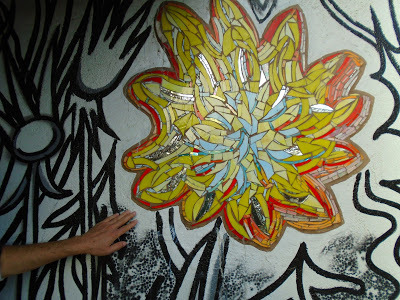 Earlier this year, after spending many months packing up and staging a family home, I dove deep into the heart of a new book.
Earlier this year, after spending many months packing up and staging a family home, I dove deep into the heart of a new book.I had an idea. I went with it.
It came upon me, rushed straight through me, was so clear in every way that I could not see (despite several rounds of editing) where all the problems were. The airiness in places. The repetitions. The transitions that were the farthest thing from cool.
In the heat of excitement over an idea, a place, a family of characters, I failed to see the novel's many failures.
And so months have gone by. And so dear, wise, kind literary agent Danielle Smith has read the book and offered hope. And so I sit with the book now again on my lap, working through a first real revision (the kind you can do only after your original excitement has cooled). I'm cataloging all the mistakes I made.
(I blush. I shake my head. I have to stand up. Shake it off.)
I'm thinking, Beth, you are better than this. Beth, you should have known. Beth, how could you not have heard the breakage in this sentence? Beth, where was your sense of rhythm?
I'm thinking, Beth, when will you stop being a novice writer?
I'm thinking, Not anytime soon.
I'm thinking we're all, in some way, always novice writers, no matter how many books we've writen through.
That we only save ourselves by revising well once the original heat and rush have cooled.




Published on November 30, 2015 04:53
November 29, 2015
thoughts on my son's visit home, and this city we share
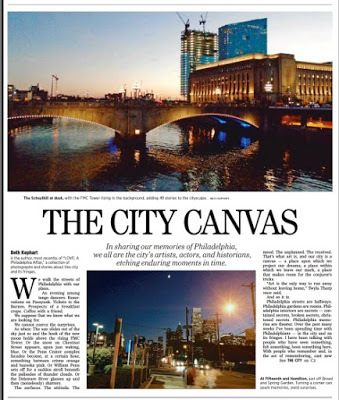 Now that our son is out on his own—a transplanted Manhattanite, a guy with an intense new-media career and plenty of stories to tell—these four Thanksgiving days are the days I most live for. Our longest stretch with him this near. Our longest walks. Our longest conversations. The thorough peace of waking up and thinking: He's just down the hall.
Now that our son is out on his own—a transplanted Manhattanite, a guy with an intense new-media career and plenty of stories to tell—these four Thanksgiving days are the days I most live for. Our longest stretch with him this near. Our longest walks. Our longest conversations. The thorough peace of waking up and thinking: He's just down the hall.I arranged my motherhood so that I would have few motherhood regrets (regrets as I defined them, for we can only ever define our own regrets)—hoped myself toward a freelance career that would spark to life when my son was at school or slept, stayed off the traveling writers' circuit, patchworked my existence. If I've sometimes felt invisible out there in the world, I've felt seen here, in this two-bedroom house, and these past few days especially I've felt more like my authentic, true-purpose self than I have since, well, last Thanksgiving.
We discovered a new trail together. We lit a candle at our table. We asked ourselves that enduring question: How do we continue to become the person we'd most like to be? And for an hour yesterday I opened my laptop and read pages from a book now very much in progress. My son is the best listener I'll ever have, the one who gets every nuance and bend of the real life I plumb into the depths of my fiction. The one who says, Okay, but let me ask you a question, and, Do you know a real-life Matias? and, Is Uncle Davy modeled on your Uncle Danny, and Yes. I see it. This could be your movie.
Last night, late, my son sat at the table and read this story in this weekend's Philadelphia Inquirer. It's the story I'd written about the Philadelphians I've lately met in my Love: A Philadelphia Affair travels. The people whose stories make our city what it is. I watched him read. I watched him nod. I saw him smile. Because my son may be living the NYC life right now, but he still considers Philadelphia home. This place we share and always will—no matter where he is, no matter what he's doing, no matter the miles between us.




Published on November 29, 2015 04:07
November 28, 2015
at the Airport, in the Inky: Philly LOVE
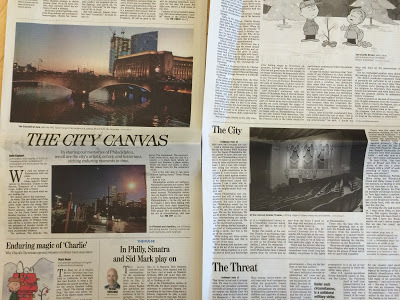 Over the past many weeks, I've traveled through and around Philadelphia, listening as others told their Philadelphia stories. I've thought about the role the city plays as an artistic canvas and about the traces we individually, collectively leave. I write about that in this weekend's Philadelphia Inquirer. I'll share the link to the story when it is live.
Over the past many weeks, I've traveled through and around Philadelphia, listening as others told their Philadelphia stories. I've thought about the role the city plays as an artistic canvas and about the traces we individually, collectively leave. I write about that in this weekend's Philadelphia Inquirer. I'll share the link to the story when it is live.In the meantime, I share this: The photos and words of Love: A Philadelphia Affair are being transformed into a stellar exhibition at the Philadelphia International Airport. The exhibition will run from December 21, 2015 through July 2016. It is located in Terminal D, accessible by ticketed passengers, and presented by the Exhibitions Program at the Philadelphia International Airport, under the generous direction of Leah Douglas.
If you are in Terminal D after December 21 and happen by it would be fun to hear from you.




Published on November 28, 2015 06:20
November 25, 2015
three things, one day: STORY, GOING OVER, Danielle Smith
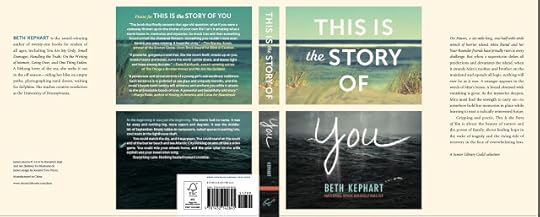
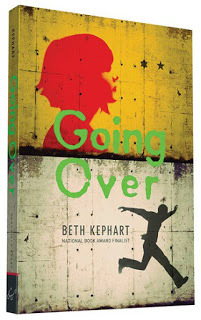 Yesterday, amidst much corporate work, three things happened:
Yesterday, amidst much corporate work, three things happened:I learned that Going Over, my 1983 Berlin Wall book, has officially launched as a paperback, and I thank Chronicle Books for its faith in this story. (And the darling Taylor Norman, for tweeting the news.)
I learned (again from Taylor, who has so steadfastly supported this book) that This Is the Story of You has gone to print, with its gorgeous jacket and incredibly generous quotes from Dana Reinhardt, Tim Wynne-Jones, and Margo Rabb (and its Junior Library Guild citation).
I talked to Danielle Smith, who (in a matter of days) read the middle grade novel I've lately been obsessed with, said so many reassuring things, talked with me about some decisions I'd have to make as I refined the story, and said yes to representing me. I have known Danielle for almost as long as I have been writing for younger readers. The popular force behind the beloved There's a Book blog, Danielle has read my stories, always. She has supported me in a multitude of ways—throwing blog parties, walking the floor of the BEA with me, calling just to talk, listening as I worked through ideas. A few years ago, Danielle launched a career as an agent and today, as a member of Red Fox Literary, she is seeing her authors receive raves and stars, foreign sales, and success at hoped-for houses. I've always been happy to call Danielle my friend. I'm incredibly happy to be taking this step forward with her into the land of Middle Grade.




Published on November 25, 2015 03:24
November 24, 2015
The Art of the Remembrancer: The World Before Us/Aislinn Hunter
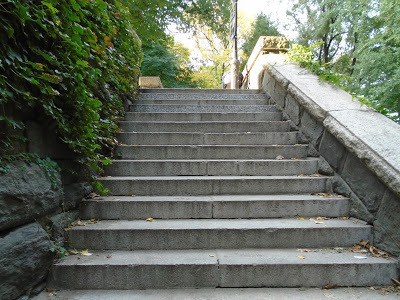 Anmiryam Budner of Main Point Books (Bryn Mawr, PA) has a way about her. A stealth please, try that wins me over every time. I think you will like this book, you will appreciate this writer, this reminds me of something you might have done or might some day do, she'll say. And there's no walking away from that.
Anmiryam Budner of Main Point Books (Bryn Mawr, PA) has a way about her. A stealth please, try that wins me over every time. I think you will like this book, you will appreciate this writer, this reminds me of something you might have done or might some day do, she'll say. And there's no walking away from that.Most recently I left Main Point Books with The World Before Us, a novel of great complexity and intrigue by Aislinn Hunter. It is a story told in part by remembrancers—ghosts, if you like—who have gathered around a British archivist named Jane. Jane works in a small museum of vast collections—and that museum is about to close. Jane also endlessly works through a childhood trauma—the day the little girl left in her charge (Jane was fifteen at the time and slightly (secretly) in love with the child's father) disappeared on the estate of a Victorian asylum. Obsessed with the disappearance of little Lily, Jane is also obsessed with other mysteries of the asylum's late 19th century heyday. She ponders, researches, loses herself in the vortex of time.
Those remembrancers listen in. They remember their own pasts. They move the story forward.
Hunter is an author of many gifts. Her ability to conjure colliding periods, a musty museum, multiple distant lives, garden ruins is, I think, uncanny—she does it all so very well. Then there's the shape of her sentences, the sly inventiveness bent into even the most quiet of scenes:
... she reached a large glass case on thick oak feet. It contained a series of criss-crossed branches upon which Nathanial Hartford, Esquire, had supervised the wire mounting of two hundred and four hummingbirds in an attempt to display all the colours and designs of the species. The birds were caught in various stages of rest or flight, their wings closed or spread out like the slats of a fan. Most people paused here briefly, if they stopped at all, but Jane studied each bird in turn, the dark beads of their eyes, their long bills, flamboyant gorgets. Those of us who had followed her into the museum studied the birds too, and watched her, the care she gave each individual thing.This is a story that takes its time, that introduces large casts of alive and dead characters, that hinges around the questions that an archivist has about a character that appears to have gone missing from the history books, a character named N. The suspense is a researcher's suspense. The plot is not nearly as important as the themes—time, memory, regret, the cloister of the dead around the turbulence of the living. I was reminded, as I read, of Nova Ren Suma's The Walls Around Us (about which I wrote here)—another book told, at times, with the Choral We, another book in which the language is careful, inventive, and haunted.
"When is a bird no longer a bird?" one of us asked.
It took me a while to finish World. I've been lost inside a thicket of Too Many things. And even if, at times, I wished for a few less direct intrusions by those remembrancers, even if I wondered if the story might have succeeded with fewer characters, I always wanted to get back to this story. I wanted to see how this incredibly talented Hunter would pull her complex machinery off. I wanted to appreciate the particularity of this novelist, in passages like this:
And in the dark, in drifts of memory, we recall some of the people and things we have happened pon, moments that aroused us from the stupor of our lives—the plumes of a peacock unfolding under an elm, the bright platter of a sky coroneted by trees, a list retrieved from between an armoire and the wall of a house by the sea:
Flat of palm on abdomen
Shift of sheets
Hard shelf of his hips against the soft of mine
Curve of water glass against my lips—his hand trembling
Coarse planking of the wood floor
The hitch of a sliver




Published on November 24, 2015 03:59
November 23, 2015
Between the World and Me/Ta-Nehisi Coates: My Book Club of Two
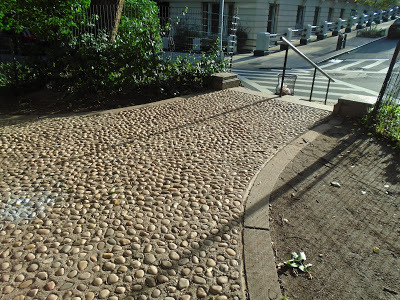 I bought two copies of Between the World and Me, the Ta-Nehisi Coates National Book Award winner, this famed letter to a son. One for me and one for my nephew Owen, with whom I stood, not long ago, on the Yale campus during commencement. We were there in celebration of Owen's sister. The crowd had settled and was waiting. During the pause a near stranger accosted first me and then (this was my fault) Owen with her singular world view. It was hard, she said, to be a white man in today's world. It was hard. In fact, it was terrible.
I bought two copies of Between the World and Me, the Ta-Nehisi Coates National Book Award winner, this famed letter to a son. One for me and one for my nephew Owen, with whom I stood, not long ago, on the Yale campus during commencement. We were there in celebration of Owen's sister. The crowd had settled and was waiting. During the pause a near stranger accosted first me and then (this was my fault) Owen with her singular world view. It was hard, she said, to be a white man in today's world. It was hard. In fact, it was terrible.Politely, with economical urgency, my nephew offered his perhaps not. Perhaps being a white man in this world is not the hardest thing to be. Perhaps, he said, laying out the logic.
I love my nephew. He teaches me many things— Rubik's cubes and emoji and a recipe for tortilla soup. But I love most the conversations between the funny stuff, the glimpses of serious that we allow ourselves, the guy he was at Yale that day, dissuading Privilege from her ideas about wronged privilege. And so I bought me a copy of Coates and I bought Owen a copy of Coates, and I suggested that we together read.
"Book club of two!" Owen declared. Indeed.
Between the World and Me is fearless in its construction, damning in its accounting, a sandblasting of "Dreamer" ideology, a history of racecraft. It is deliberately bold, self-awareishly extreme, the sort of testimony that rocks readers from a long sleep:
Americans believe in the reality of "race" as a defined, indubitable feature of the natural world. Racism—the need to ascribe bone-deep features to people and then humiliate, reduce, and destroy them—inevitably follows from this inalterable condition. In this way, racism is rendered as the innocent daughter of Mother Nature, and one is left to deplore the Middle Passage or Trail of Tears the way one deplores an earthquake, a tornado, or any other phenomenon that can be cast as beyond the handiwork of men.Body is the word here. Living inside a black body is the question, the experience, the theme, the springboard from which Coates tells the story of his own coming into awareness as a quester, as a young man whose father beat him so that he might be strong, as a Howard University student who left the classroom for the library and found his heart inside The Mecca, as a friend whose friend was wrongly gunned down, as a father, as a husband, as an excursionist to Paris. Yes, Paris, beautifully rendered here.
Bracing and blunt, Between the World and Me is a missile launched toward the heart of comfortable ideas. It is a cry out from a place of long darkness:
Do not struggle for the Dreamers. Hope for them. Pray for them, if you are so moved. But do not pin your struggle on their conversion. The Dreamers will have to learn to struggle themselves, to understand that the field for their Dream, the stage where they have painted themselves white, is the deathbed of us all.But here in these pages readers will also find the salve of knowledge, the power of curiosity, and the potentiality of language—learned and deployed.
I was learning the craft of poetry, which really was an intensive version of what my mother had taught me all those years ago—the craft of writing as the art of thinking. Poetry aims for an economy of truth—loose and useless words must be discarded, and I found that these loose and useless words were not separate from loose and useless thoughts. Poetry was not simply the transcription of notions—beautiful writing rarely is.... Poetry was the processing of my thoughts until the slag of justification fell away and I was left with the cold steel truths of life.Dear Book Club of Two member: I want to know your thoughts.
Dear World, Dear Privilege: We are standing on the precipice. Narrow, excluding points of view will not, cannot save us.




Published on November 23, 2015 04:48
November 21, 2015
Foley Artist, Doppler on Wheels, Celebrity Designer, Islamist Authority, Choreographer, Bestselling Author, Yale Scholar, Extraordinary Hero, Athlete, My Brother: The 2015 Radnor High Hall of Fame Inductees
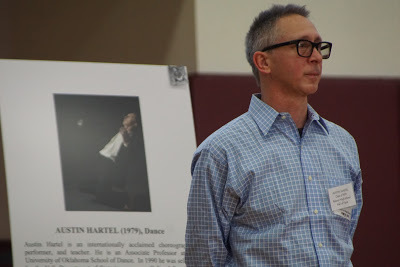
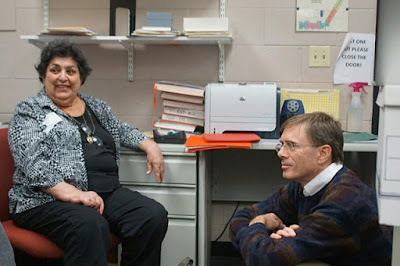
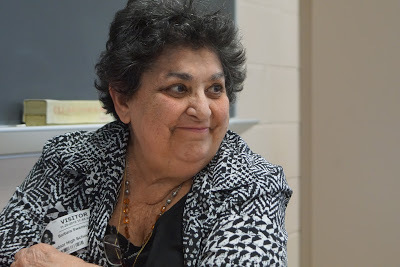
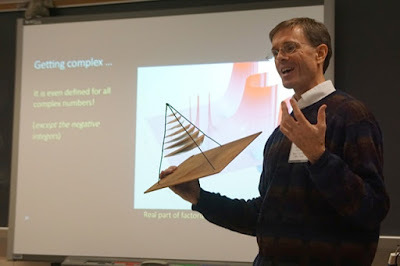
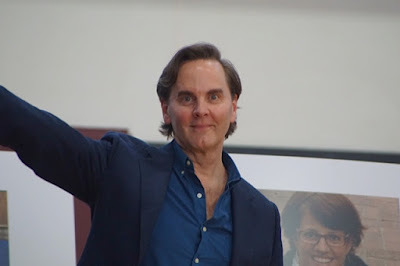
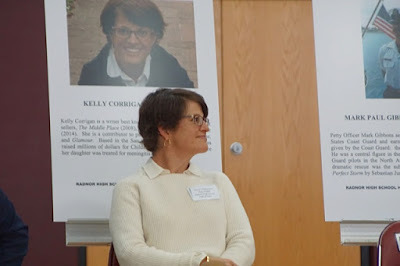
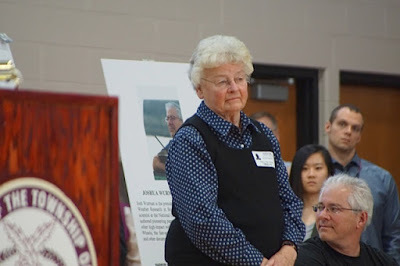
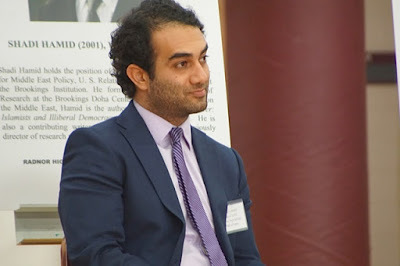
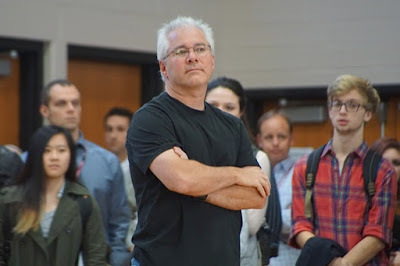
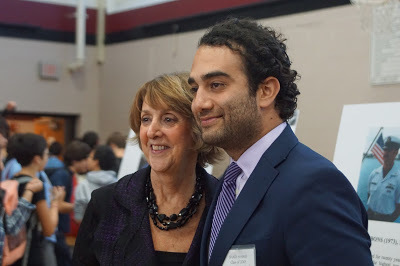
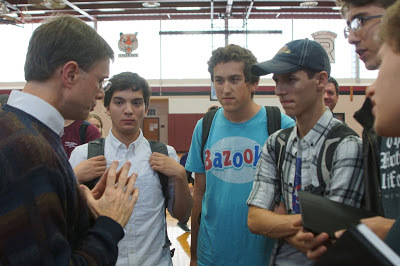
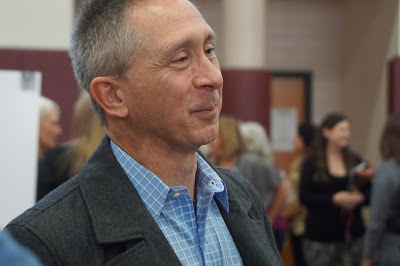
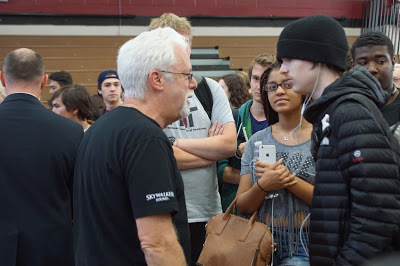
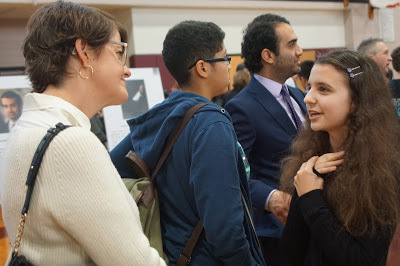
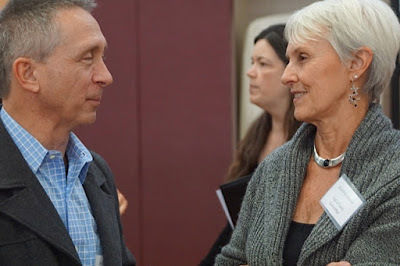
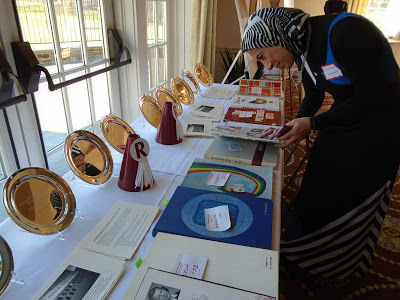
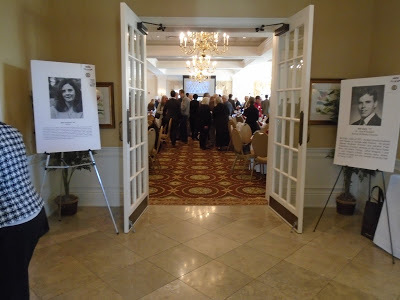
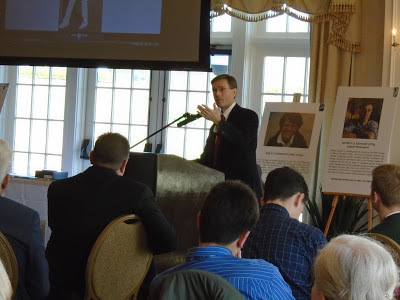
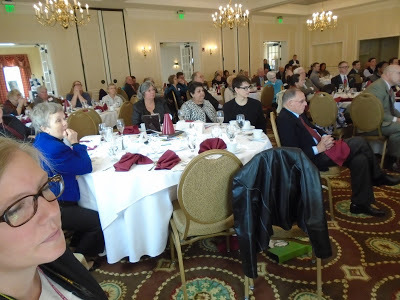
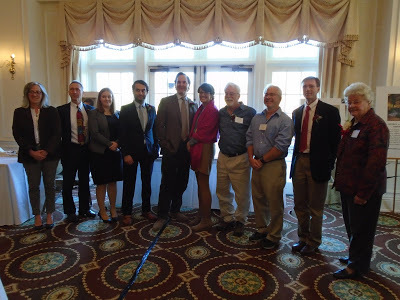
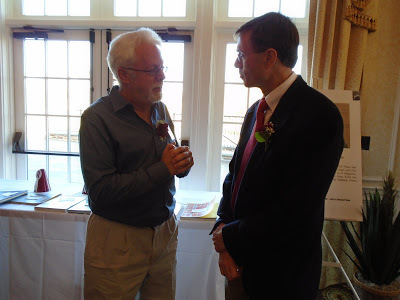
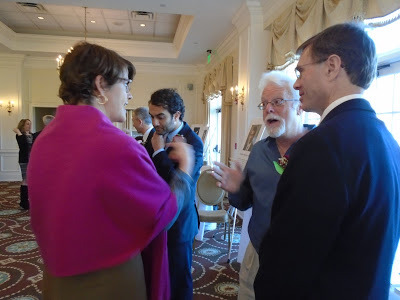
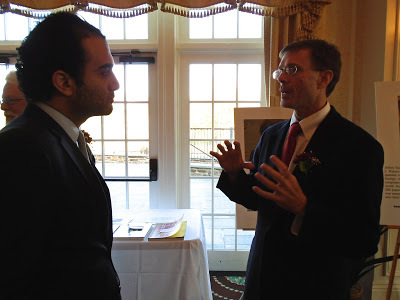
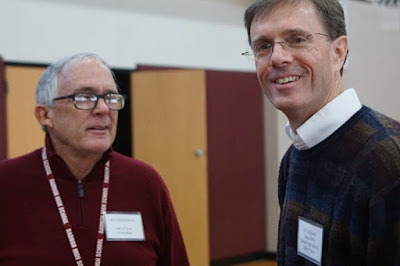 Yesterday and now again today: the celebration of the Radnor High 2015 Hall of Famers.
Yesterday and now again today: the celebration of the Radnor High 2015 Hall of Famers.I was privileged to attend yesterday's ceremony—to watch my brother teach a master class to exceptionally bright young mathematicians (and to see him reunite with his favorite high school math teacher, Mrs. Swanson), to listen to the appreciative crowd as the inductees were named in that glossy gymnasium, to see my classmate Josh Wurman after so many years, and to thank some of the many people who make these two days what they are.
This year's inductees are remarkable—Jeffrey Bilhuber, a top designer whose clients include David Bowie and Anna Wintour, the best-selling author Kelly Corrigan, the military hero Mark Gibbons, the essential world affairs analyst and Islamist expert Shadi Hamid, the charming, internationally acclaimed choreographer Austin Hartel, the Yale scholar Maria Rosa Menocal, the multiple Academy Award winning Foley Artist John Roesch (more than a dozen of the films he has worked on have won Academy Awards), the uber athlete Jenepher Shillingford, and the acclaimed scientist, meteorologist, and Discovery Channel storm chaser Josh Wurman.
But the Radnor High students are equally remarkable. Their eagerness to go into the thick of Pascal's Triangle, their respect for Shadi's knowledge, their roar when John's "Dark Knight" and "Frozen" were mentioned, their interest in process, their questions about careers.
Yesterday I asked Shadi if part of his felt responsibility was to offer hope in his analysis of ISIS and great discontent. The act of understanding, Shadi said, is a form of hope—a beautiful response in difficult days. But the students of Radnor High are also a form of hope—their connection to those who have gone before, their appreciation for a couple of hours spent with those who were once rising, questioning, wondering, too.
In a few hours, the second half of the program will commence. I'm dashing down to Penn to give a mini talk, then hurrying back to watch more greatness unfold.
A huge thank you to Mr Skip Shoemaker, Jeanne Lynam, Sharon Reardon, and the many others who create these immeasurable moments.




Published on November 21, 2015 02:57
Academy Award Winner, Doppler on Wheels, Celebrity Designer, Islamist Authority, Choreographer, Bestselling Author, Yale Scholar, Extraordinary Hero, Athlete, My Brother: The 2015 Radnor High Hall of Fame Inductees















 Yesterday and now again today: the celebration of the Radnor High 2015 Hall of Famers.
Yesterday and now again today: the celebration of the Radnor High 2015 Hall of Famers.I was privileged to attend yesterday's ceremony—to watch my brother teach a master class to exceptionally bright young mathematicians (and to see him reunite with his favorite high school math teacher, Mrs. Swanson), to listen to the appreciative crowd as the inductees were named in that glossy gymnasium, to see my classmate Josh Wurman after so many years, and to thank some of the many people who make these two days what they are.
This year's inductees are remarkable—Jeffrey Bilhuber, a top designer whose clients include David Bowie and Anna Wintour, the best-selling author Kelly Corrigan, the military hero Mark Gibbons, the essential world affairs analyst and Islamist expert Shadi Hamid, the charming, internationally acclaimed choreographer Austin Hartel, the Yale scholar Maria Rosa Menocal, the multiple Academy Award winning Foley Artist John Roesch, the uber athlete Jenepher Shillingford, and the acclaimed scientist, meteorologist, and Discovery Channel storm chaser Josh Wurman.
But the Radnor High students are equally remarkable. Their eagerness to go into the thick of the Pascal Triangle, their respect for Shadi's knowledge, their roar when John's "Dark Knight" and "Frozen" were mentioned, their interest in process, their questions about careers.
Yesterday I asked Shadi if part of his felt responsibility was to offer hope in his analysis of ISIS and great discontent. The act of understanding, Shadi said, is a form of hope—a beautiful response in difficult days. But the students of Radnor High are also a form of hope—their connection to those who have gone before, their appreciation for a couple of hours spent with those who were once rising, questioning, wondering, too.
In a few hours, the second half of the program will commence. I'm dashing down to Penn to give a mini talk, then hurrying back to watch more greatness unfold.
A huge thank you to Mr Skip Shoemaker, Jeanne Lynam, Sharon Reardon, and the many others who create these immeasurable moments.




Published on November 21, 2015 02:57



